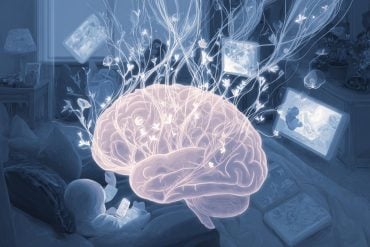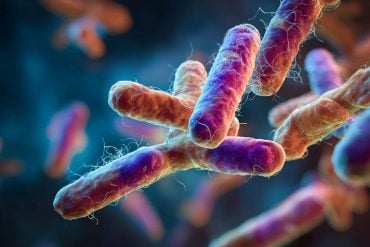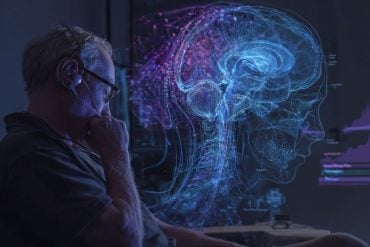Summary: A new study explored how the hippocampus and insula interact during the encoding of emotional memories in humans. Sixteen participants with implanted electrodes viewed emotionally valenced words and attempted to recall them while neural activity was recorded.
Certain insular neuronal populations showed distinct activity patterns that predicted successful memory encoding, with changes occurring after hippocampal theta rhythms but before hippocampal ripple bursts. Another group of insular neurons responded only to emotional valence, unrelated to memory performance.
Electrical stimulation experiments revealed asymmetric communication: stimulating memory-related insular sites triggered rapid hippocampal responses, while hippocampal stimulation produced slower, widespread insular activity. These findings illuminate how specialized cortical regions and the hippocampus coordinate to encode emotionally significant memories.
Key Facts:
- Predictive Insular Activity: Specific insular neurons changed activity patterns that predicted memory recall success.
- Timing of Signals: Insular memory signals followed hippocampal theta but preceded hippocampal ripple bursts.
- Asymmetric Communication: Stimulating the insula influenced the hippocampus more directly than the reverse.
Source: Neuroscience News
The hippocampus is famously known as the brain’s memory hub, particularly for forming episodic memories, but its dialogue with other brain regions during this process has been less clear.
A new study offers rare insight by recording directly from the hippocampus and insula in human participants as they formed and recalled emotionally charged words.

Researchers found that specific groups of insular neurons changed their activity in ways that predicted successful memory encoding, closely linked to, yet distinct from, hippocampal signals.
These memory-related changes in the insula came after hippocampal theta rhythms but before the high-frequency “ripple” bursts that consolidate memory, suggesting a precisely timed exchange.
Another group of insular neurons tracked the emotional valence of words, independent of memory.
Strikingly, when researchers stimulated memory-related insular regions, they evoked quick hippocampal responses, while hippocampal stimulation produced slow, diffuse changes in the insula—revealing an asymmetric, but crucial, partnership in memory formation.
This research highlights how the hippocampus works in concert with specialized cortical populations, like those in the insula, to encode the richness and emotion of our experiences.
It also underscores the insula’s dual role: one set of neurons dedicated to memory processes and another to emotional evaluation, both contributing to how we remember emotionally significant events.
The observed asymmetry in communication suggests the hippocampus may be more of a coordinator, integrating and responding to inputs from specialized cortical areas.
These findings bring neuroscientists a step closer to understanding the mesoscale dynamics of memory formation and the intricate choreography between memory and emotion.
By showing how these two regions interact at the level of individual neuronal populations, this study sheds light on the biological underpinnings of emotionally laden memories—and why they often feel so vivid and enduring.
As research continues, targeting these pathways may open up new avenues for treating memory disorders or conditions where emotional memory processing is disrupted, such as PTSD or depression.
About this memory and neuroscience research news
Author: Neuroscience News Communications
Source: Neuroscience News
Contact: Neuroscience News Communications – Neuroscience News
Image: The image is credited to Neuroscience News
Original Research: Closed access.
“Direct interactions between the human insula and hippocampus during memory encoding” by Weichen Huang et al. Nature Neuroscience
Abstract
Direct interactions between the human insula and hippocampus during memory encoding
The hippocampus is critical for encoding episodic memories, but how it interacts with cortical regions during this process remains unclear.
In this study, 16 participants with implanted electrodes in the insula (217 sites) and hippocampus (131 sites) viewed emotionally valenced words and attempted to recall them.
During encoding, one subset of insular neuronal populations showed changes in aperiodic activity that predicted successful recall.
These insular changes followed hippocampal theta but preceded hippocampal ripples. Another subset of insular sites responded to word valence, unrelated to memory performance.
Direct electrical stimulation of memory-related insular sites evoked early responses in the ipsilateral hippocampus, whereas stimulation of valence-related sites did not.
Conversely, stimulating hippocampal sites produced slow, variable signals across all insular sites, suggesting asymmetric communication between the hippocampus and the insula.
These findings provide a glimpse of mesoscale hippocampal interactions with functionally selective neuronal populations within a given cortical structure.






